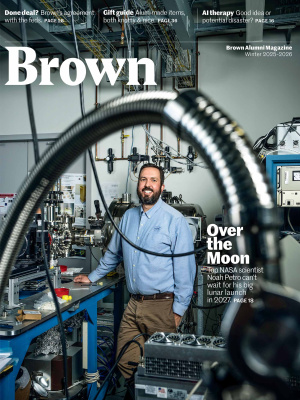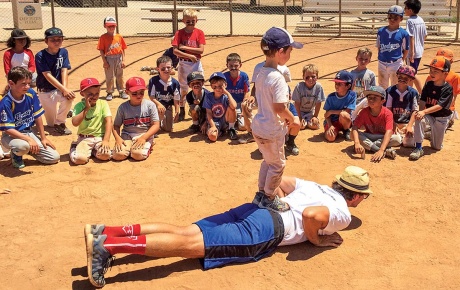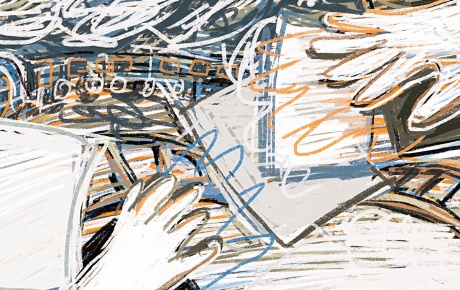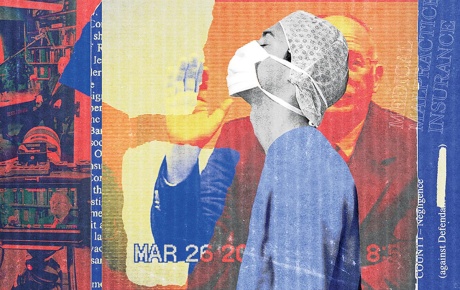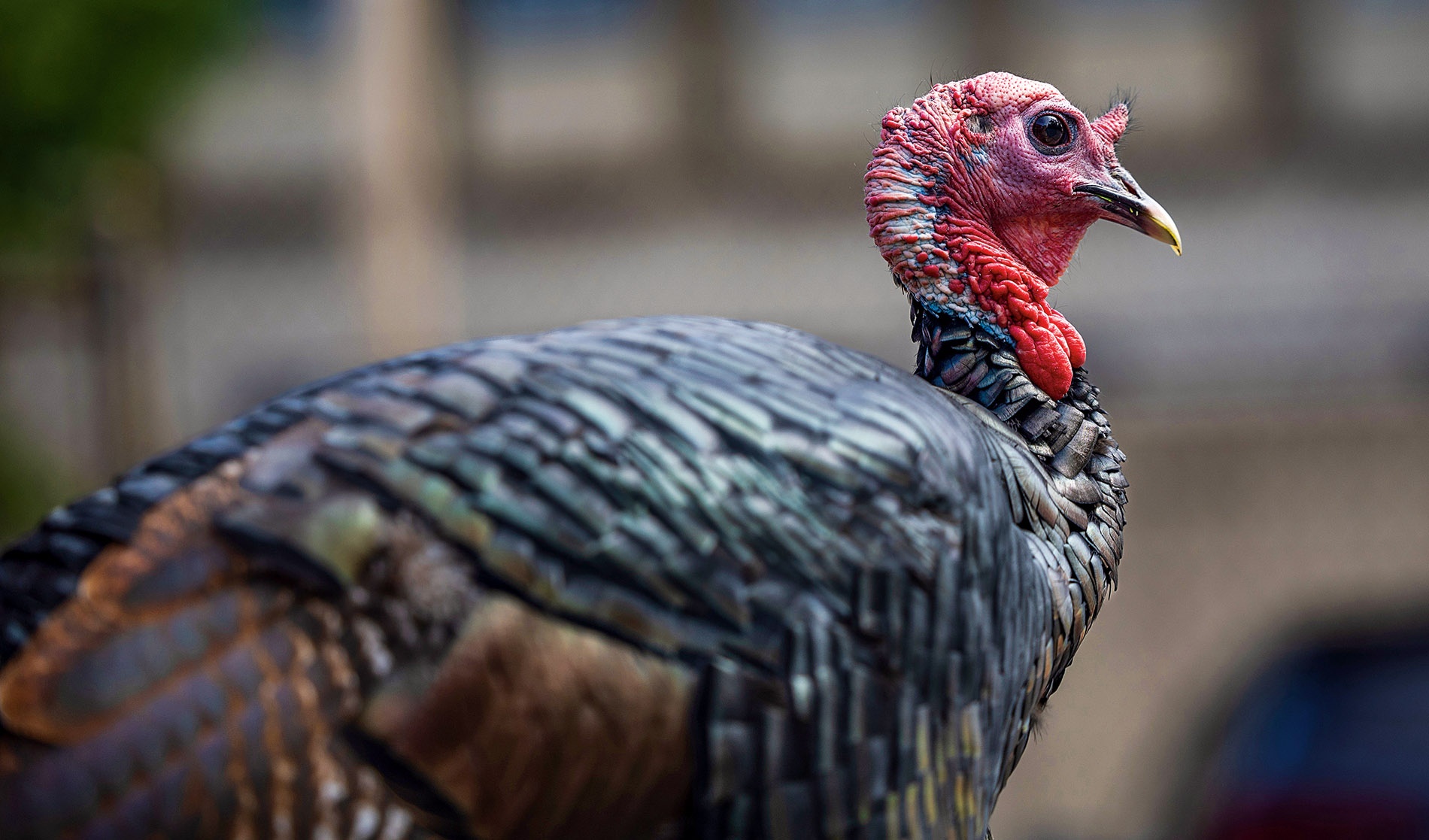
Let’s Talk Turkey
Wild fowl join the College Hill flock
“Oh god, I’m gonna become one of those videos where the turkeys chase after a person,” Fabiola Penafiel ’28 thought when she first came head to head with College Hill’s newest avian neighbor. The College Hill Turkey, dubbed “Waterman Tom” by the Brown Student Birding Club, is infiltrating camera rolls, social media feeds, and even work-group chats as community members rush to document their latest sighting. While Sidechat posts and Instagram stories captioned “Why did the turkey cross the road” or simply “Turkey” on social media tend to showcase photos of a solitary turkey-in-headlights, the College Hill Turkey is not a lone tom.
“At the beginning, I didn’t know it was birds. I was like, what is that movement in the corner?” said Penafiel, who was in shock after spotting two female turkeys in front of her dormitory. She noted their small stature and lack of full tail feathers, indicating they were hens. “They crossed the road and made it to the lawn of Young Orchard. They were just frolicking there,” Penafiel said. While Young Orchard is on the calmer, southern end of campus, some turkeys have not feared venturing onto busier streets of Providence.
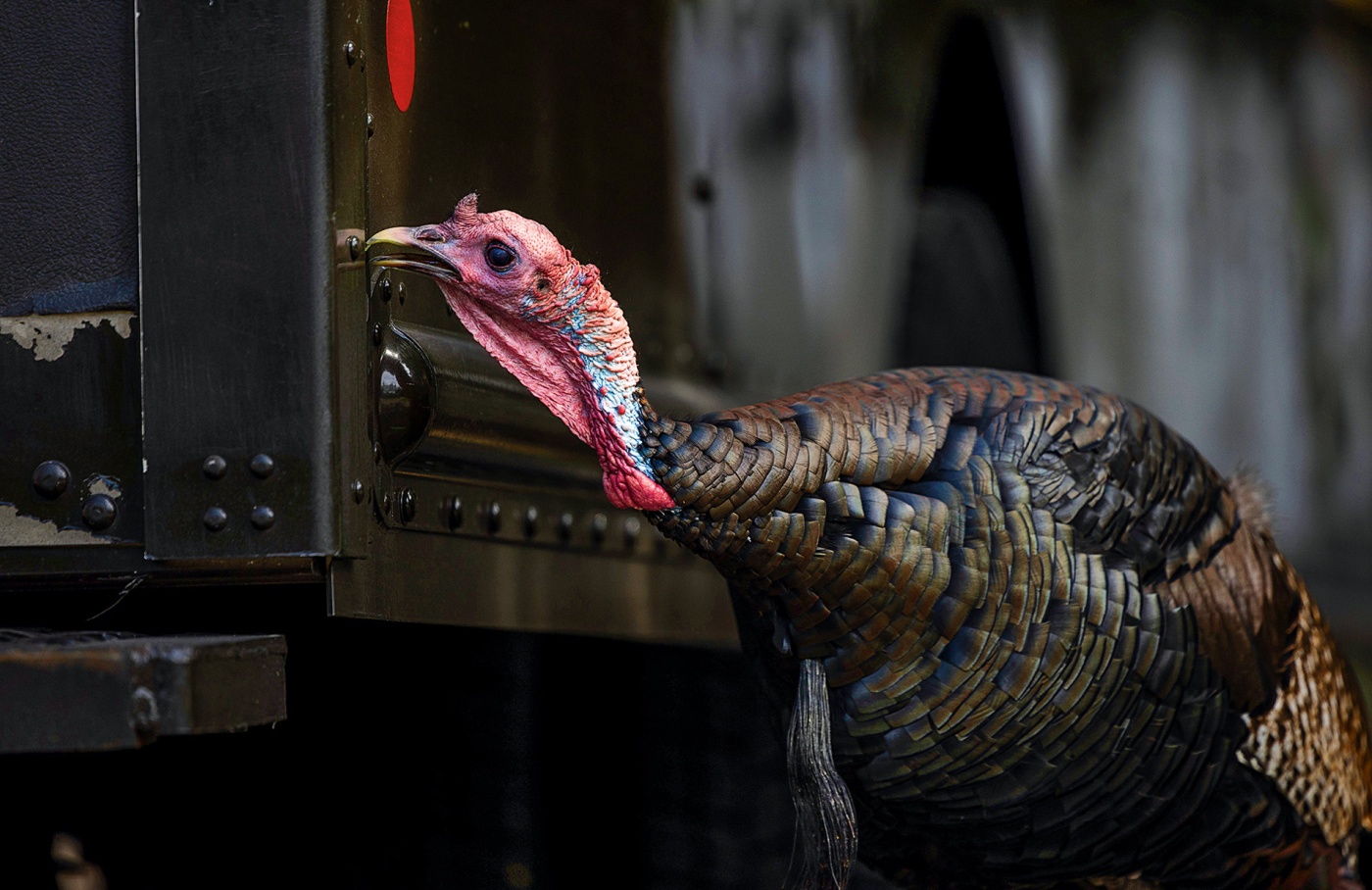
On the day of Brown’s 262nd Opening Convocation, Preston Rossi ’27 spotted a brave turkey amid traffic on Waterman Street, attacking an automobile. “The turkey decided it found its food on the bumper of one of the cars going up the street,” Rossi recalls. “He did not care that the cars behind him were honking; he was determined.” However, turkeys are not the biggest traffic hindrance on College Hill—they join student pedestrians in blindly crossing major intersections. It’s “the spirit of our campus,” Rossi says.
Why eat a car bumper? Lauren Parmalee, senior director of education for the Audubon Society of Rhode Island, says of turkeys, “They’re not big thinkers” and suggested that they may be attracted to their reflections in chrome bumpers or glass.
The turkey spotted by Rossi later collided with a car on September 28, but hours later a Sidechat post titled “HALLELUJAH” reported, “Our boy is unscathed and with his girl.”
Despite these birds’ disruption of traffic, local officials do not seek to trap or move wild turkeys because “it’s very stressful for the animal to leave its local habitat,” Parmalee said.
“The unique thing about those turkeys is that they’re thriving in an urban atmosphere,” Stephen Ogunbiyi ’26, president of the Student Birding Club, says. Parmalee explains that wild turkeys may be found in urban areas, if they are fed or find food: “Maybe he’s learned to eat french fries out of the back of a restaurant.” (Or the Ratty dining hall?)
Social media has been an important site for students’ admiration of nature on campus: @brownubunnies on Instagram and similar accounts have become popular among students to submit candid wildlife photos.
Ogunbiyi, a two-year member of the Student Birding Club’s executive board, hopes that beyond social media posts these turkeys inspire a greater appreciation for the nature of Providence. “Maybe go on a walk to a local park and see other cool birds. Or go to Swan Point cemetery and see the other flocks of turkeys,” Ogunbiyi says. “Use this as a gateway to enjoy the outdoors and appreciate the nature around you.”

